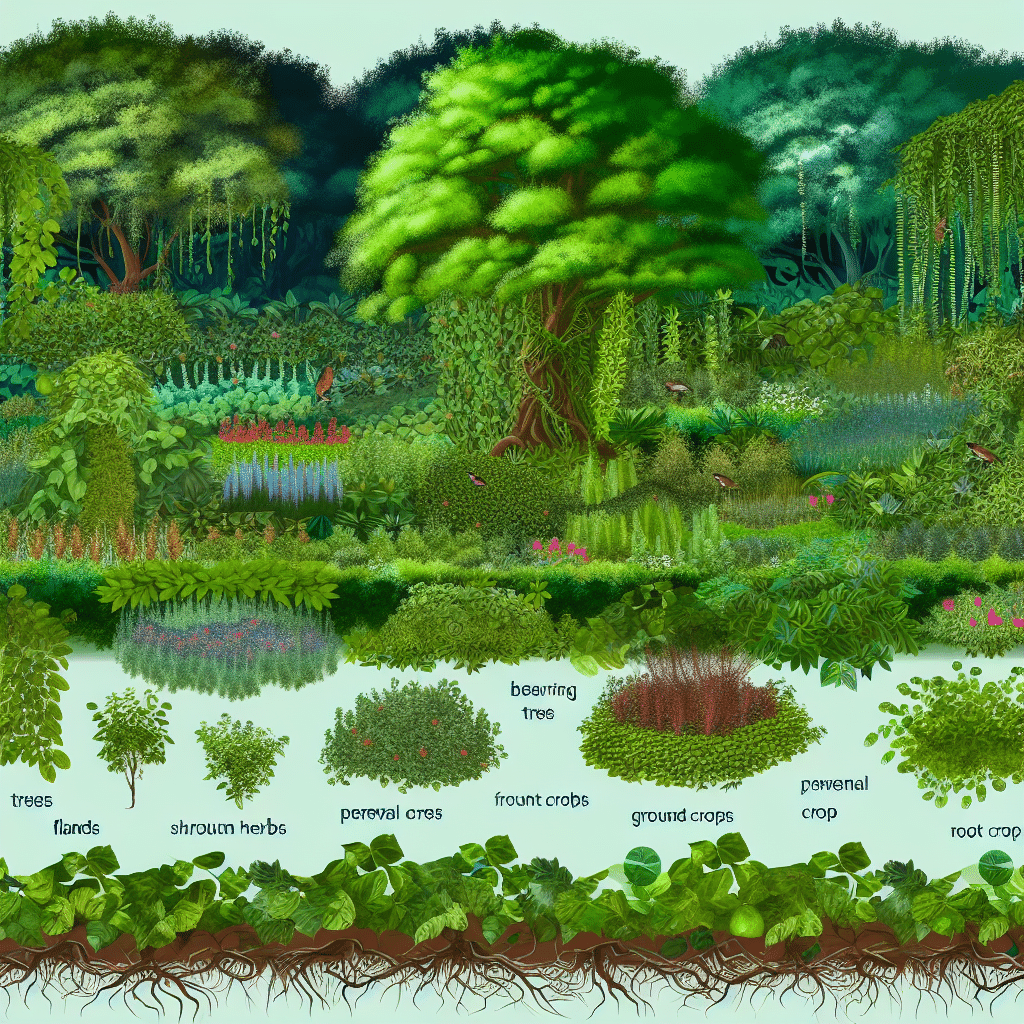Have you ever imagined a garden that thrives like a natural forest, providing food, medicine, and beauty with minimal maintenance? Welcome to the world of forest gardening. This innovative approach to agriculture mimics the structure and ecology of natural forests to create self-sustaining ecosystems. In this article, we will dive deep into the concept of forest gardening, its benefits, and practical steps to start one in your backyard.
What is Forest Gardening?
Forest gardening, sometimes referred to as agroforestry or food forests, is an ancient practice rooted in indigenous agriculture and permaculture principles. This method involves cultivating edible plants in a way that mimics the layered complexity of a forest. Unlike traditional monoculture farming, forest gardening incorporates a diverse range of trees, shrubs, herbs, and ground cover species that work symbiotically.
Why Choose Forest Gardening?
Ecological Benefits
Forest gardening promotes biodiversity by incorporating a wide range of plant species, which in turn attracts various forms of wildlife. This diversity creates a balanced ecosystem that requires less human intervention. The plants naturally support each other, reducing the need for fertilizers and pesticides. Furthermore, the presence of tree cover helps sequester carbon dioxide, making forest gardening a practical solution for combating climate change.
Economic Advantages
While the initial setup of a forest garden might require some time and effort, the long-term maintenance is significantly lower compared to conventional farming. Once established, these gardens can provide a continuous supply of food with minimal input. The diverse range of plants also offers multiple streams of income, from fresh produce and medicinal herbs to timber and eco-tourism.
How to Start Your Own Forest Garden?
Site Selection and Layout
The first step in creating a forest garden is selecting an appropriate site. Ideally, choose an area with good sunlight, water access, and fertile soil. Conduct a soil test to understand its pH and nutrient levels.
When designing your forest garden, think in layers:
1. **Canopy Layer**: Tall trees that form the uppermost layer.
2. **Low-Tree Layer**: Smaller fruit or nut trees.
3. **Shrub Layer**: Berries and other shrubs.
4. **Herbaceous Layer**: Perennial herbs and vegetables.
5. **Ground Cover Layer**: Plants that cover the soil.
6. **Rhizosphere Layer**: Root crops.
7. **Vertical Layer**: Vines and climbers.
Plant Selection and Diversity
Choosing the right plants for your forest garden is crucial. Aim for a mix of perennial and annual plants that will provide yield throughout the year. Native species are often more resilient and better adapted to local conditions. Combination of nitrogen-fixing plants like legumes can enhance soil fertility naturally.
Soil Preparation and Planting
Begin by enriching the soil with organic matter like compost or aged manure. This improves soil structure and nutrient content. Arrange your selected plants according to their layers and compatibility. Planting densely helps in minimizing weeds and optimizing space.
Maintaining Your Forest Garden
Minimal Interventions
One of the primary advantages of forest gardening is its low maintenance. Regular mulching and adding organic matter can keep the soil fertile. Natural predators and beneficial insects usually take care of pests, reducing the need for chemical interventions.
Water Management
Efficient water management is essential. Swales, rain gardens, and ponds can help capture and store rainwater, ensuring your plants have a steady water supply during dry periods.
Challenges and Solutions
Initial Setup
The initial phase of creating a forest garden can be labor-intensive and may require substantial investment in terms of time and resources. However, the long-term benefits far outweigh the initial efforts.
Pest and Disease Management
While biodiversity helps in natural pest control, occasional outbreaks might occur. Integrated Pest Management (IPM) strategies, like introducing beneficial insects or using organic repellents, can address these issues effectively.
The Future of Forest Gardening
Forest gardening is more than just an agricultural practice; it’s a philosophy that encourages us to live harmoniously with nature. As our global population grows and climate challenges intensify, sustainable practices like forest gardening will play a crucial role in ensuring food security and ecological balance. By creating your own forest garden, you are not only contributing to the environment but also crafting a resilient, self-sufficient lifestyle.
So, why wait? Start small, learn, and gradually expand your forest garden. The rewards, both tangible and intangible, are well worth the effort.




